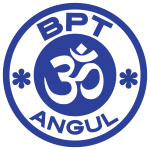However, nowadays most organizations are following an agile-based approach to software development. In such scenarios, testing is no longer a phase but an activity you carry out as early in the process as possible. If that’s the case, test design is done several times in the context of a single iteration.

You have to mention the history of the development of this situation. After this, you should have one or more high-level context diagrams for the software application and scenarios. You can refer to the System Design Document (SDD), Requirements Document, and High-level Technical Design Concept for these diagrams. A complete tutorial that explores test specifications, their types and components, and how to create them. This supports a complete hierarchy of feature sets to test and their test cases.
The QA team writes the test specifications for every test case at the unit level. The significance of these test specifications is that they enable the testers to clearly digest the goal of the test case and further implement it with precision toward success. Those who develop tests can use the previous test specifications again to develop new test versions. The earlier test specifications play the role of a guide for comparison between the previous versions of a test and the new versions. Test coverage in the test plan states what requirements will be verified during what stages of the product life. Test coverage for different product life stages may overlap but will not necessarily be exactly the same for all stages.
IEEE 829 test plan structure
Test methods may be determined by standards, regulatory agencies, or contractual agreement, or may have to be created new. Test methods also specify test equipment to be used in the performance of the tests and establish pass/fail criteria. Test methods used to verify hardware design requirements can range from very simple steps, such as visual inspection, to elaborate test procedures that are documented separately. Test Design Specification plays a crucial role in simplifying the testing process. This documentation possesses a great deal of significance as it assists in communication between testing team members. When it comes to more detailed communication on software system features, it also helps to lead a more proper testing process.
Some examples of these are human actions, tables, data (values, ranges, and sets), relationships (timing), files (transaction files, control files, and databases), and conditions (states), among others. You need to describe the input as text, an interface to another system, a file identifier, and a picture of a properly completed screen. You can use tables for data elements and values to simplify the documentation.
Having covered the “what,” “why,” “who,” and “when” of test design, the only major question left for us to tackle is the “how.” Now we’ll cover three techniques for test design. If it’s for a test then see the answers above, otherwise you’ll have to adjust your definitions to the place and and context your are using them in. I saw definitions changing test design definition drastically not only between companies but also between teams and managers. In software engineering, test design is the activity of deriving and specifying test cases from test conditions to test software. You should provide brief but accurate definitions of the terms in this document with which the readers might need to be more conversant.
1.7 Pass/Fail Criteria:
Please review our Terms of Use and Job Posting Rules for further information. Similar is the

argument with respect to the different development processes. This remains valid even for Exploratory testing as you can
apply it even if you use the waterfall model. You may think

that automation has a large influence on test design.

You have to specify the acceptable precision or range for such variations. It is essential to note down the minimum count of alternatives or combinations of the input and output values considered acceptable test results. You should specify the minimum and maximum permissible test duration regarding the count of events or time. The maximum count of system breaks, halts, and interrupts that may occur should be mentioned. You have to write the purpose of the test case or script and follow it with a short description. The next step is to identify whether multiple test functions can use the test case or script.
- The overall approach stated in the plan is refined into specific test techniques that should be followed and into the criteria to be used for evaluation.
- In the beginning, you have no historical data, and you will probably not reach the optimum.
- Test specifications are ‘written guidelines’ instructing the testers to run specific test suites and skip some.
- Test coverage also feeds back into the design process, since the product may have to be designed to allow test access.
- Testers can leverage the test specification documents to facilitate the maintenance of the test phase.
This study essentially dealt with theoretical and operational writing construct definition throughout test development processes for test designers, and through sitting for the test for test takers. Students’ test scores were obtained to investigate social aspects of writing assessment in the Tunisian setting. The quantitative data for this paper were analysed using SPSS and indicated there is a gap between teachers and students’ views on the writing construct and what they endorsed and represented concretely. A subsequent discussion of the study findings and its theoretical, pedagogical and methodological implications for the local writing assessment context was maintained. Test Case Specification document described detailed summary of what scenarios will be tested, how they will be tested, how often they will be tested, and so on and so forth, for a given feature. The importance of documentation during the process of software testing is well known.
A test plan is a document detailing the objectives, resources, and processes for a specific test session for a software or hardware product. The plan typically contains a detailed understanding of the eventual workflow. Easy; with the help of a test automation tool that doesn’t require code skills, testers can convert their manual exploratory testing sessions into automated test cases that they can execute later.
















